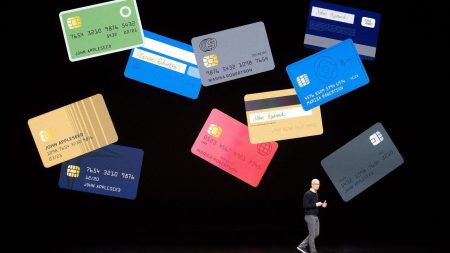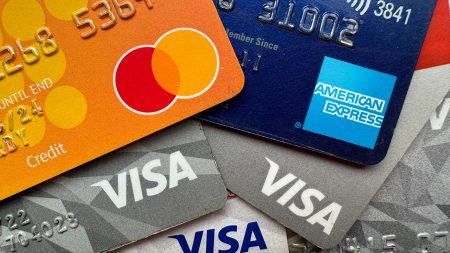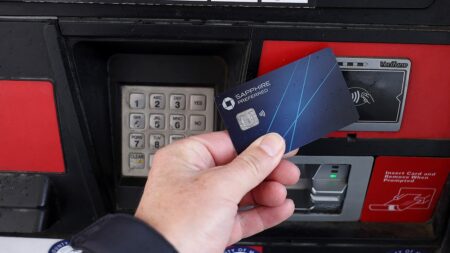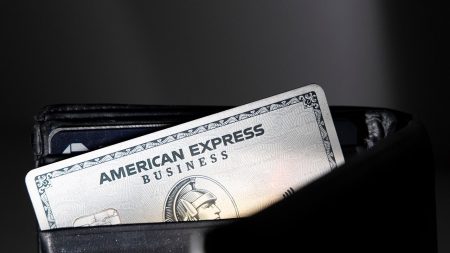Americans living paycheck to paycheck own most of the U.S. credit card debt, a recent survey said.
As of November 2023, 62% of consumers relied on their next paycheck to cover their monthly financial outflows, the PYMNTS and LendingClub survey said. These consumers also own nearly 60% of the credit cards in the U.S. Moreover, 80% of paycheck-to-paycheck consumers own at least two credit cards on average.
The report also said that paycheck-to-paycheck cardholders are more than twice as likely as those not living paycheck-to-paycheck to carry a credit card balance over to the following month. Close to one-third said they reached their credit card limit, an average of $9,200, at least occasionally in the last year.
Americans now owe $1.08 trillion on their credit cards after racking up a collective $48 billion in new spending during the third quarter of 2023, according to a recent report on household debt from the Federal Reserve Bank of New York.
If you’re struggling with high-interest debt in a troubling economy, you could consider paying it off with a personal loan at a lower interest rate. Visit Credible to compare your options without affecting your credit score.
BUY A HOME IN THESE STATES TO GET STUDENT LOAN DEBT RELIEF
40% living paycheck to paycheck have high credit scores
Despite their ballooning credit card debt, 40% of consumers living paycheck to paycheck still have super-prime credit scores of 720 or higher, the survey said. These consumers are also more likely to use debit cards than credit cards for everyday transactions, demonstrating their commitment to live within their means and preserve that flexibility to remain creditworthy.
Regardless of financial lifestyle, 80% of consumers said their credit scores are very or extremely important, with the average consumer checking their credit scores every 76 days. The report also said that paycheck-to-paycheck consumers most value higher credit limits and split payment plans when choosing a credit card.
“Credit cards can be an important financing option that credit-savvy consumers use to better manage their cash flows, though it’s concerning that many consumers revolved their credit card balances regardless of financial lifestyle,” LendingClub’s Money Expert Alia Dudum said. “Credit cards keep many in debt, and cardholders who carry a balance (revolvers) subsidize the rewards earned by those who pay their balance in full every month (transactors).
“Revolvers need better solutions for retiring existing debt and better options for bridging gaps in cash flow,” Dudum continued.
If you’re worried about high-interest debt, you could consider paying it off with a personal loan at a lower rate to reduce your monthly payments. Visit Credible to get your personalized rate in minutes.
MANY AMERICANS PREPARING FOR A RECESSION DESPITE SIGNS THAT SAY OTHERWISE: SURVEY
Millennial enrollment in debt resolution programs up
Consumers are now running into financial trouble earlier in life, a recent Achieve survey said. The typical age of Americans seeking help to resolve their debt has decreased since the pandemic, with a median age of 44 in 2023, compared to 52 in 2020. Millennials saw the most significant shift, with 39% of those enrolling in debt resolution programs coming from this age group in 2023 compared to 25% in 2020.
Americans, in general, are dealing with growing debt. Credit card balances spiked by $154 billion year-over-year, notching the most significant increase since 1999, according to the Federal Reserve Bank of New York. In total, debts increased by $786 billion from last year, with auto loan debts growing by $71 billion, maintaining an upward trend since 2011 and reaching a total of $1.6 trillion.
Also rising is the number of consumers missing payments on their debt obligations. Credit card delinquencies rose across the board for most debt types except student loans and home equity lines of credit, according to the New York Fed. The increases in credit card delinquency were the sharpest among Millennials, or borrowers between the ages of 30 and 39, who are also burdened by high levels of student loan debt, according to the New York Fed.
“These repayment difficulties will likely continue to mount for student loan borrowers, now that student loan payments have resumed,” the New York Fed said.
If you’re interested in paying off high-interest debt with a personal loan, you could visit the Credible marketplace to learn more about your options and speak with an expert to get your questions answered.
COLLEGE TUITION PAYMENT PLANS MAY PUT STUDENT AT RISK: CFPB
Have a finance-related question, but don’t know who to ask? Email The Credible Money Expert at [email protected] and your question might be answered by Credible in our Money Expert column.
Read the full article here













